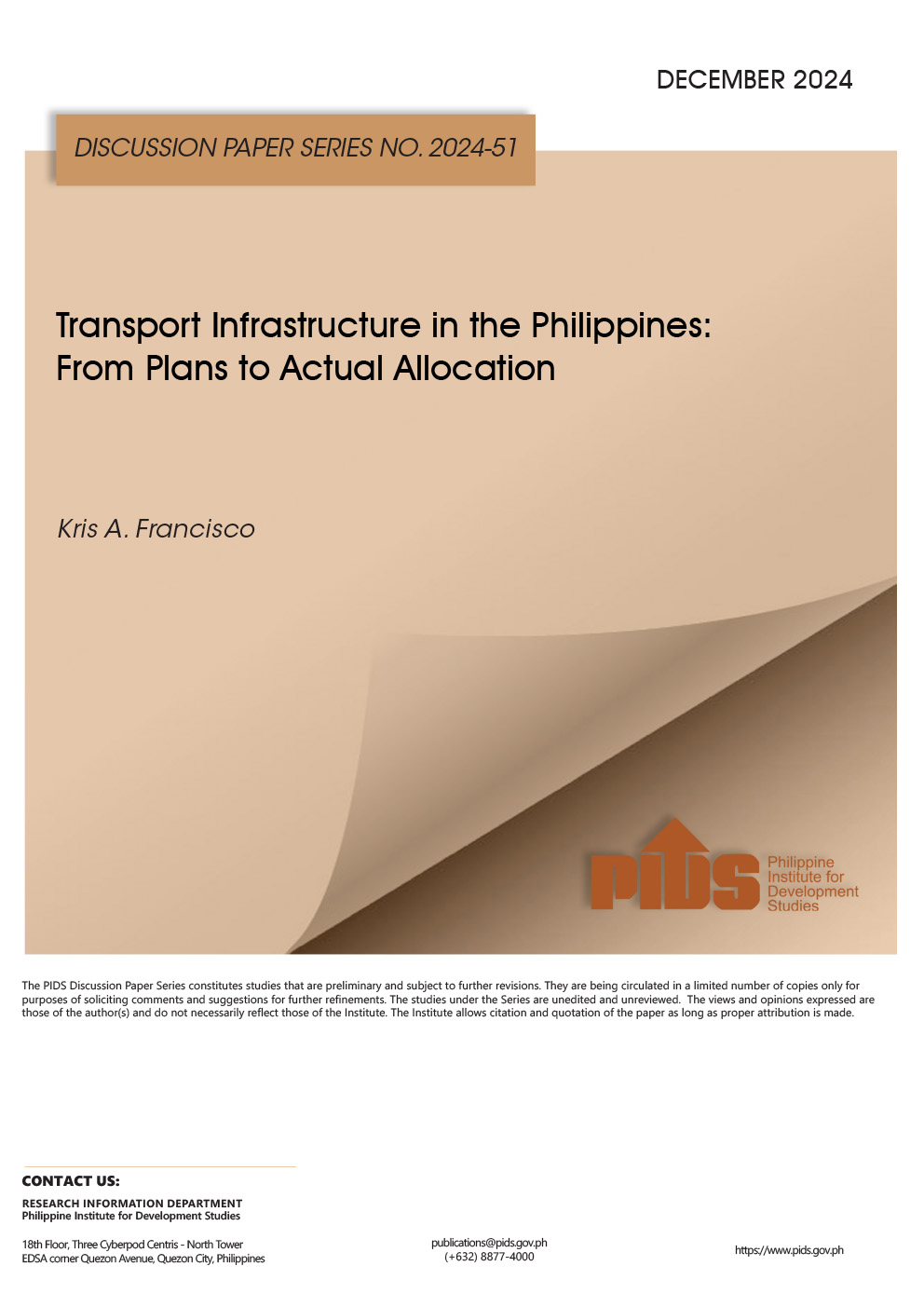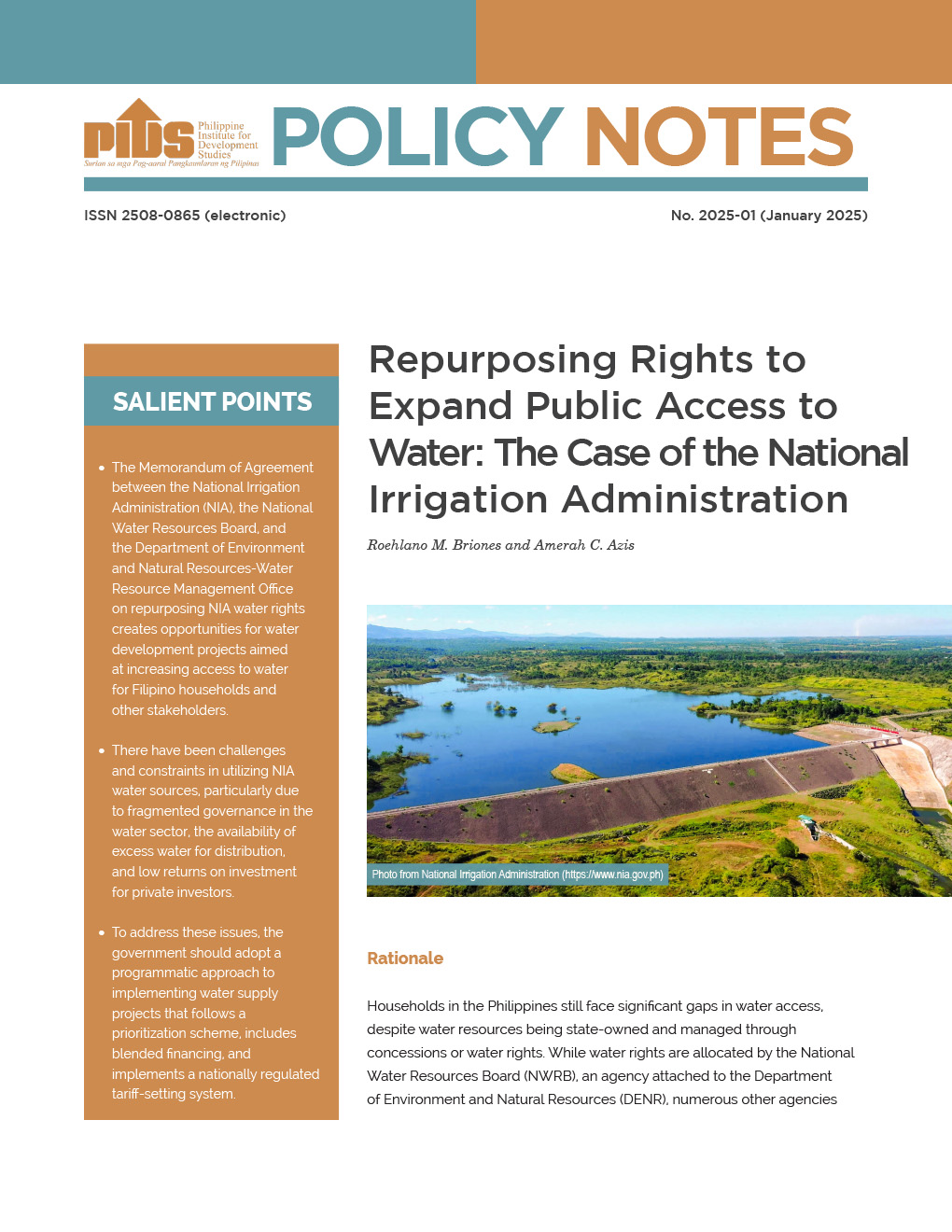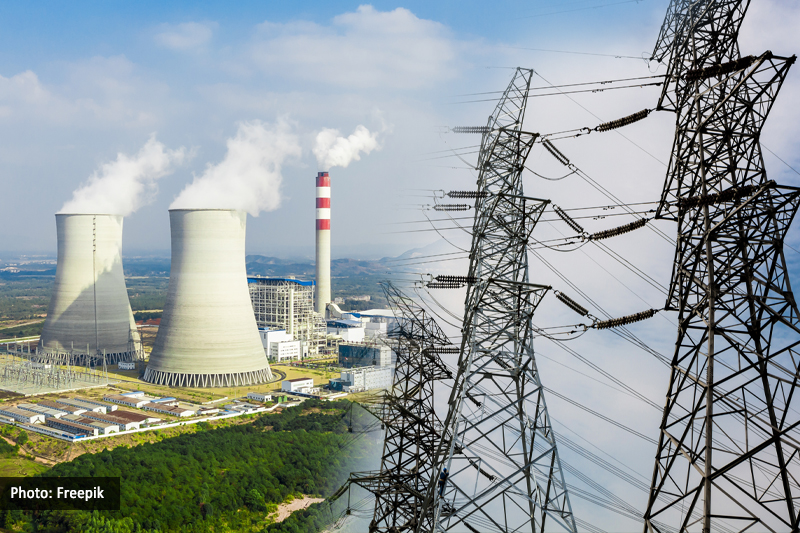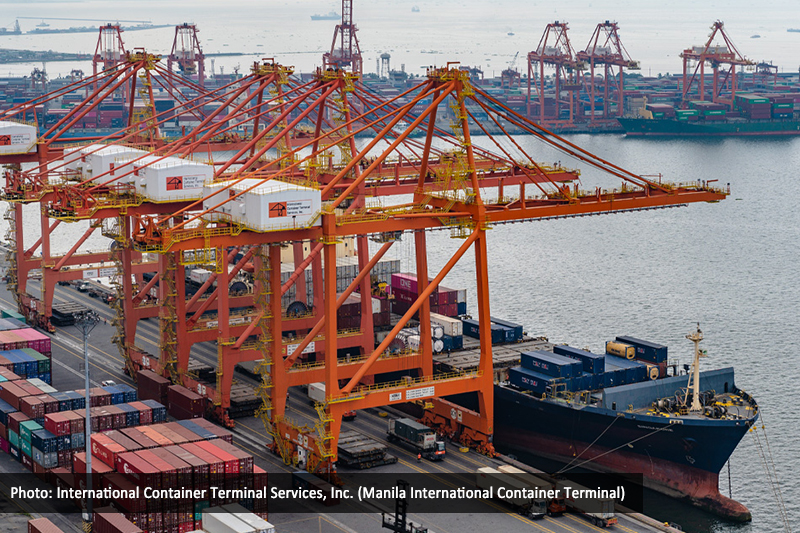HEADING into its final year in office, the government will have tweaked the “Build, Build, Build” (BBB) program multiple times to favor those projects with the best chance of being even partially completed before President Rodrigo R. Duterte steps down.
Starting with 75 big-ticket projects at its launch in 2017, the P8.4-trillion flagship infrastructure program was meant to address the Philippines’ lack of competitiveness because of bad roads, transportation, and crippling road traffic that made Metro Manila a difficult place to live for its residents, much less investors.
But the project list was subjected to three revisions in four years, entailing several rounds of feasibility reassessment. The result was that some projects were omitted and other more “shovel-ready” projects added to the list, ultimately expanding it to over 104. The National Economic and Development Authority board, chaired by the President, put the value of these projects at P4.13 trillion in mid-2020, a little lower that the P4.23-trillion cost estimate for the 2019 revised list of 100 projects.
The stakes couldn’t be higher — the political future of Mr. Duterte’s successors, who can be expected to continue his programs and forestall retaliation from any potentially hostile new administration.
Robin A. Gonzales, a 28-year-old resident of Manila, is determined not to vote for Mr. Duterte’s “anointed” candidate if road congestion doesn’t improve.
Speaking to BusinessWorld via Facebook chat in February, Mr. Gonzales said he needs to commute to work on the capital’s traffic-choked roads. He describes the time he spends stuck on the road in terms of opportunity losses.
“The traffic problems eat up my time, which could have been used for more productive work,” he said in a Facebook messenger chat.
On how he intends to vote in the national election of 2022, he said: “It’s better to vote for someone who can fulfill his promises.”
Citing studies by the Japan International Cooperation Agency, the Metro Manila Development Authority said in 2019 that the capital region’s road congestion cost the economy P3.5 billion a day in 2018. Losses may rise to P5.4 billion a day by 2035 if no changes are made.
So far, only two items from the original flagship list — the Angat Water Transmission Improvement Project and the Luzon Bypass Infrastructure Project, an information and communications technology upgrade — have been completed, according to a study released by the Philippine Institute for Development Studies in December.
With time running out on the administration, the best-case scenario for the end of term might be leaving a substantial project pipeline, trusting that they will be implemented by the next government, with the risk that the successor administration may want to associate itself with its own projects or otherwise pursue other priorities. The government gamely insists that its official target remains the completion of 56 of the flagship projects before Mr. Duterte steps down. The remainder will be completed as late as 2028 — when the successor government itself is due to leave office.
A total of 34 projects in the latest list are in the pre-construction stage, 44 are being built, and 24 are in the various stages of approval.
Eight projects from the old list have been shelved, including five transport projects — Sangley Airport, New Dumaguete Airport, New Zamboanga International Airport, the Bataan-Cavite Interlink Bridge, and the Dalton Pass East Alignment Alternative Road Project; three water projects — the Panay River Basin Integrated Development Project, the Kabulnan-2 Multipurpose Irrigation and Power Project in Maguindanao, and the Kanan Dam Project in Quezon.
Despite the culling of transport projects, the sector remains the largest spending item with 74.4% of the total, followed by water (12%), social infrastructure (5.03%), information communication technology (3.17%), healthcare (2.70%), and power (1.76%).
SPENDING BAN
One recurring hurdle to any government infrastructure initiative is the election-period ban on public works spending, which was designed to prevent incumbents from disbursing money on so-called “midnight projects” in the run-up to the election. What the drafters feared most was a last-minute surge of project spending in a bid to influence the outcome of the polls.
One drawback of this rule is that contractors need to maximize the dry-season construction window. As it happens, national elections are typically scheduled in May — the height of the dry season. Which means that every presidential term of six years will automatically sacrifice two construction windows in the years when the midterm and the national elections are due to be held. The election spending ban in 2022 runs from March 25 to May 8, as outlined in Commission on Elections (COMELEC) Resolution No. 10695, released in February.
The workaround to the spending ban is that contracts or funding for flagship projects must be secured weeks or months before the ban. Failing to do so means “all these projects may risk being shelved by the next administration,” InfraWatch PH conveyor Terry L. Ridon said in an e-mail.
The only way out of the spending ban is to obtain an exemption from the COMELEC. The commission has stringent rules for granting exemptions.
“Prior to the ban, public works funding should have already been released, and public works contracts should have already been awarded in order to qualify (for) exemptions,” Mr. Ridon said.
Flagship projects funded via Public-Private-Partnership (PPP) schemes are not covered by the ban, but “projects supported by official development assistance may be subject to the rule, unless infrastructure agencies seek specific exemptions from the Comelec for these projects,” he said.
Foreign loans play a key role in flagship-project spending. Of the P4.13 trillion earmarked for the projects, more than half or P2.26 trillion will be funded via loans and grants from overseas across 50 projects or so, most of them transport-related.
“Frankly, if flagship projects fail to get funded or awarded prior to the ban, it will be the next administration that will decide whether or not to pursue the project,” Mr. Ridon said.
“One month prior to the transfer of power will certainly be not enough to undertake the funding and awarding of flagship projects without allegations of midnight deals and golden parachutes for outgoing government executives,” he added.
Although there had been initial reluctance to undertake projects under build-transfer-operate terms, the government eventually included 29 PPPs worth P1.69 trillion in the latest list, in consideration of the private sector’s substantial appetite for public works projects.
Meanwhile, a total of 25 projects worth P180.321 billion will be funded directly by the government from budget funds. These projects are topped by the Philippine Identification System project, which is worth P26.26 billion.
“We are expecting infrastructure agencies and contractors to expedite processes and activities” prior to the ban, Mr. Ridon said. “But this will also be dependent on how soon the 2022 General Appropriations Act is signed into law.”
Any delay in the passage of the government’s spending plan for 2022 would cause funding difficulties to ongoing and approved projects, and result in construction delays, he said. “In order to avoid further delays, the budget bill should be enacted by early December.”
Economic growth in the second quarter of 2019 slowed to 5.4% from the 6.0% recorded a year earlier, due to the nearly four-month delay in the 2019 budget, which was signed one month before that year’s midterm elections.
Mr. Ridon said agencies in charge of infrastructure projects need to make projections and plan around any bans, to minimize disruption. They must also study temporarily transferring idled workers to other projects not covered by the ban, in order to minimize the impact on livelihoods.
“A balance needs to be struck for infrastructure funding, because of its potential for providing immediate and massive employment during the pandemic,” he said.
“The setbacks relating to the election ban should have been incorporated into the projections of projects that will be implemented during this period (including) the cost of leasing heavy equipment and finance charges for funding operations and supplies.”
‘PORK-HEAVY PROJECTS’
The 2021 General Appropriations Act authorizes a national budget of P4.5 trillion in 2021, featuring at least P1.1 trillion for public infrastructure.
“The increase to P1.1 trillion of the infrastructure budget in 2021 is conspicuous especially amid so many urgent social and health needs,” IBON Foundation Executive Director Sonny A. Africa said via Facebook messenger. “Like many, we suspect that this is at least partly motivated by politicians eager for ‘multi-purpose facilities,’ roads, bridges, and other pork-heavy projects.”
Senator Panfilo M. Lacson, a long-time opponent of pork barrel public spending, said during the budget deliberations last year that as much as P469 billion worth of projects could represent illegal lump-sum budget items. “It begs the question: Is this an election campaign budget?” he said during one session.
“Politicians are well aware of the 45-day ban on public works spending before the May 2022 elections and there is no doubt that the 2021 budget is designed as a pre-election budget to serve their interests,” IBON’s Mr. Africa said.
The wrangling over the 2021 budget helped produce a leadership change at the House of Representatives, with the coup crystallizing in a rogue session by the conspirators outside the Batasang Pambansa during last year’s budget discussions. Their main grievance was the allegedly uneven distribution of infrastructure funds across the various congressional districts.
“Legislators did their homework early and the pork projects they negotiated with the executive were already built into the 2021 budget submitted to Congress,’ Mr. Africa said.
The spending plan also earmarked at least P16 billion for the so-called “Barangay Development Program” run by the government’s anti-communist insurgency task force. The program rewards barangays that have cleared their territories of Maoist rebels, by funding farm-to-market roads, school buildings, the reconstruction of public facilities damaged by calamities, among others.
Under the communist-clearing program, the Davao region received at least P4.3 billion. The President’s home town, Davao City, received almost 40% of the region’s anti-communist fund, or about P1.64 billion.
‘NO MAGIC BULLET’
Build, Build, Build is not the only way out of the pandemic, Mr. Africa said.
“The economic managers should realize that their BBB is not some kind of magic bullet for development,” he said.
“It didn’t work to boost economic growth before the pandemic. Infra spending increased from 3.9% of GDP in 2016 to 5.4% in 2019 yet, over that exact same period, GDP growth slowed in each and every year from 7.1% in 2016 to 6% in 2019. Average annual job generation also slowed compared to before 2016-2019.”
With the prolonged pandemic, emergency cash assistance and support to small enterprises will provide much more social and economic bang for the buck than big-ticket infrastructure projects, he said. “This can bring about a much more immediate improvement in people’s welfare as well as a much bigger boost to domestic aggregate demand and economic recovery.”
“Every billion pesos spent on imported materials, equipment, machinery, contractors and labor is a billion-peso stimulus to the Chinese, Japanese or other foreign economy and not to the Philippines,” he said.
“There will be no problem of absorptive capacity here as with many government departments because ordinary Filipinos are in such distress that they will certainly spend whatever they get immediately.”
With only a handful of flagship projects being constructed at the tail end of the Presidential term, “it will be difficult to honestly state that this six-year period has indeed been the country’s golden age of infrastructure,” Mr. Ridon said.
With less than 15 months left in office, the only recourse for Mr. Duterte, aside from handing over a solid infrastructure pipeline to his successor, is to take decisive measures in reducing bureaucratic hurdles, he said.
Red tape is one of the biggest stumbling blocks to completing the administration’s flagship program, Mr. Ridon said.
“While we would not want shortcuts, particularly on social and environmental licenses, five years of permitting delay should give us pause (to rethink) what really needs to be done to fast-track implementation,” he said.
Mr. Ridon said the government should “strictly implement timelines and enforce penalties for bureaucratic delay.”
“The speed bump has been with the bureaucracy itself: the countless permits and regulatory setbacks have delayed most of our flagship projects.”
Mr. Duterte last year signed a law granting him special powers to fast-track the processing and issuance of government permits and licenses.
“We have seen the streamlining of permits in (cellular) tower buildings. We should see the same in other infrastructure projects,” Mr. Ridon said.
If construction does not commence within the next 16 months, the administration’s infrastructure program list “will remain a wishlist,” he said.
“Without these projects commencing before June 30, 2022, there is no certainty whether these projects will be continued by the next administration,” he added.
“Resolving this constraint certainly assures dividends to Filipinos in the long term. New infrastructure should decongest traffic in metropolitan areas, allow suburban dwellers to travel efficiently across all points in city centers, and create conditions for sustained economic growth.”
Ultimately, the success or failure of Build, Build, Build will have repercussions beyond this Presidential term, with Mr. Duterte’s anointed successor being judged in the 2022 polls by how well Build, Build, Build turned out, political science professor Maria Ela L. Atienza of the University of the Philippines said via Viber.
“It could be one of the issues against the Duterte administration and the anointed candidate,” she said.
‘Build, Build, Build’ enters legacy-building stage
Related Posts
Publications
Press Releases
Video Highlights
[No related items]
Infographics
[No related items]






